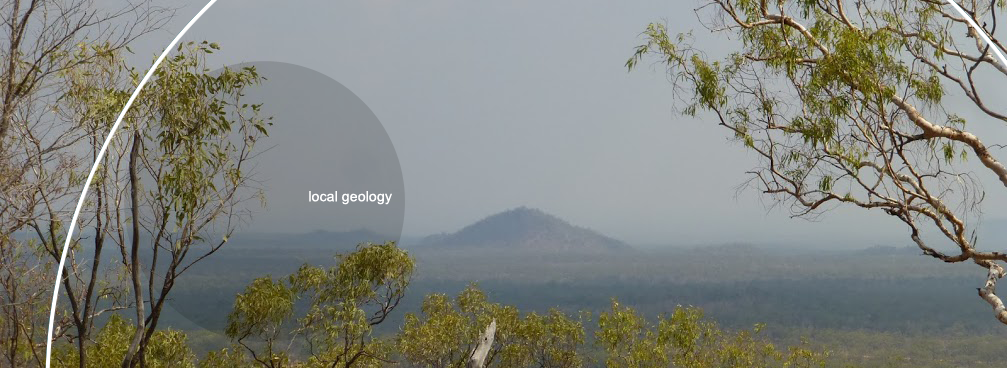The workings occur in a narrow belt of silicified rocks of the Chillagoe series, the sedimentaries being nearly surrounded by igneous intrusives. There is strong development of diorite dykes I the sedimentary rocks. Granite cuts across the south end of the area close to the Eclipse mine, also forming and intrusive boundary along the east and west sides. Quartz‐feldspar‐porphyry comes in very close to the Lyee Moon workings at the north end.
The sedimentary rocks are mainly medium grained grits being folded and elongated in a direction about 320 degrees east of north for a distance of about 1.6 kilometers. The series is about 643 metres in width. The rock type is a hard silicified limestone with a very clearly defined anticlinal fold on the immediate northeast. The outcrops are hard jasper with occasional patches of soft cellular gossans.
The project area lies within the Chillagoe region of North Queensland at the Northern Tasman Fold Belt system. The Palmerville Fault system is a major high‐angle thrust fault complex with a long history of episodic movements. During the late Devonian the Palmerville Fault brought lower Paleozoic sediments into structural contact with the Proterozoic complex.
The Palmerville Fault system has affected rocks over many kilometers wide and has prepared the land mass for many intrusive bodies, including various granite types, amphibolites porphyry’s, including the Permo‐carboniferous intrusions. The Muldiva poly‐metallic ore bodies are thought to be near the central part of the Palmerville Fault

